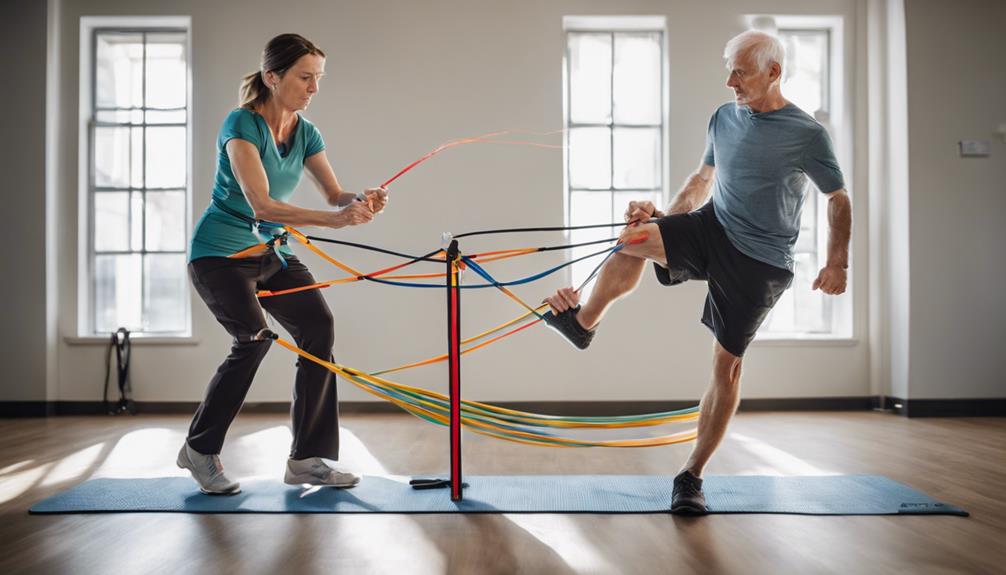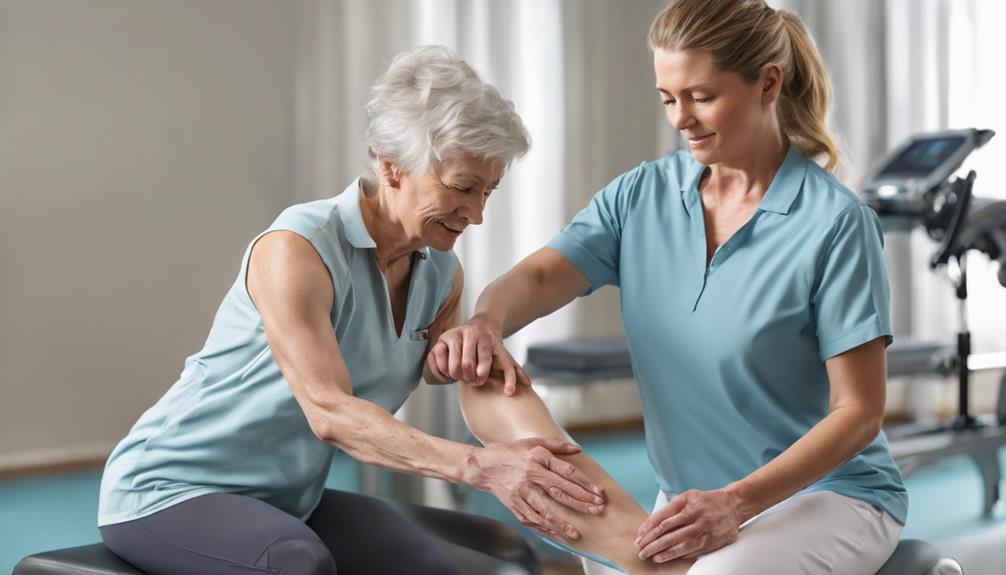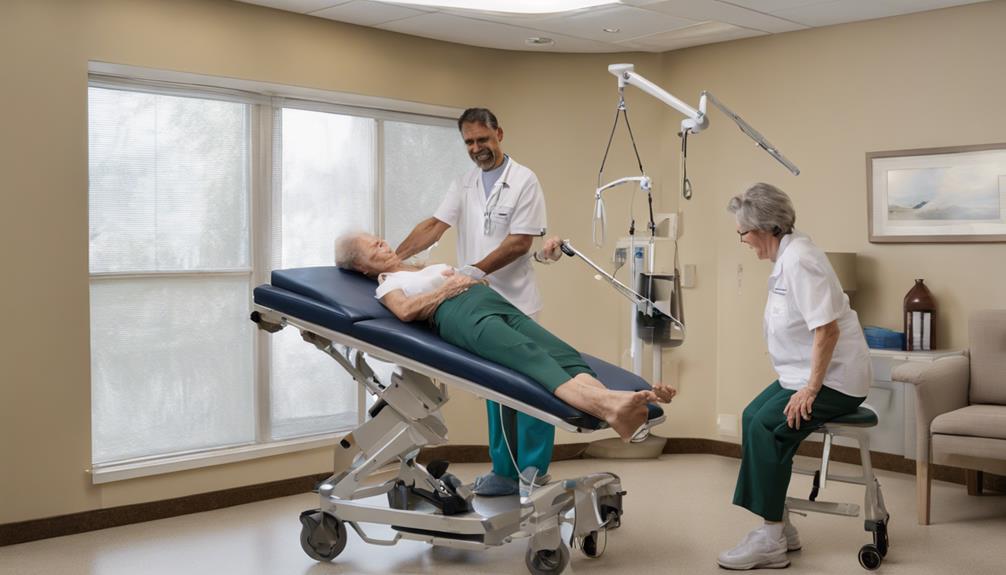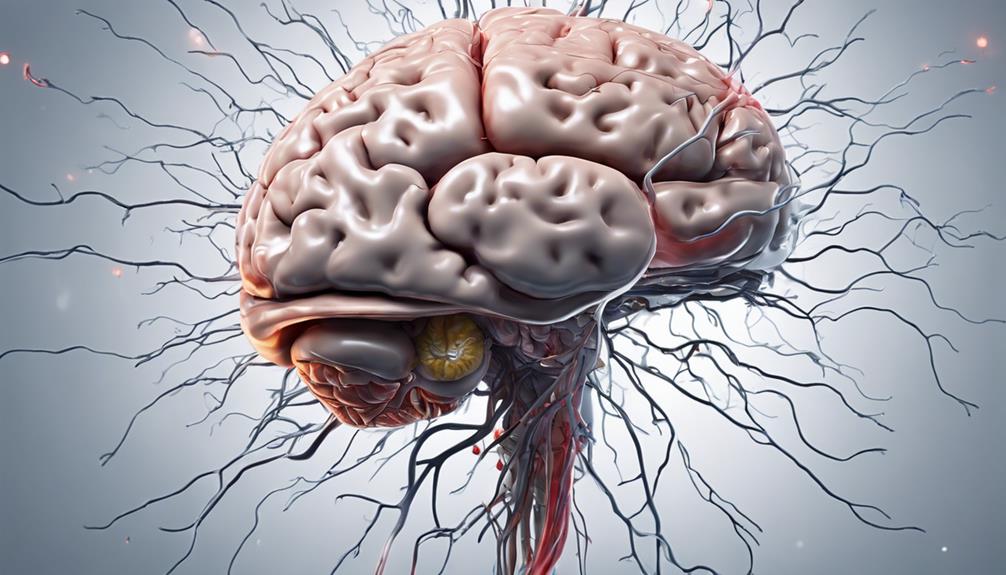When it comes to recovering from a mini stroke, a combination of relief and concern may arise. Although the immediate effects may seem minor, the long-term implications could be substantial.
Understanding the nuances of recovery and the importance of post-stroke care is vital. Let's explore the intricacies of navigating the journey back to optimal health after experiencing a mini stroke.
Key Takeaways
- Early recognition and prompt evaluation crucial for mini-stroke treatment.
- Tailored medication regimens aid post-mini-stroke recovery.
- Rehabilitation therapy and lifestyle adjustments enhance recovery outcomes.
- Adherence to treatment plan and regular check-ups vital for recovery.
Symptoms and Diagnosis
When evaluating symptoms and diagnosing a mini-stroke, a comprehensive assessment by a medical professional is imperative for accurate identification and appropriate management.
Face numbness, drooping, arm weakness, slurred speech, and vision loss are common indicators of a mini-stroke, also known as a transient ischemic attack (TIA). These warning signs shouldn't be ignored as they can precede a full stroke.
Sudden severe headaches can also be a red flag for a mini-stroke and require immediate medical attention. To confirm a mini-stroke diagnosis, imaging tests such as CT scans or MRI are often utilized to assess any damage caused by the event.
It's crucial to differentiate between a TIA and a full stroke during the diagnostic process, as this delineation guides the subsequent treatment and preventive measures. Early recognition of mini-stroke symptoms and prompt medical evaluation are vital steps towards effective recovery and reducing the risk of a more severe stroke.
Medical Treatments and Interventions

In the realm of mini stroke recovery, medical treatments and interventions encompass a range of strategies aimed at preventing further vascular events and enhancing overall patient outcomes.
Following a mini-stroke, medical professionals may prescribe anti-platelet medications, such as aspirin, to inhibit blood clot formation and reduce the risk of subsequent strokes. Additionally, anti-coagulant medications like warfarin may be recommended to prevent blood clots for individuals with specific risk factors.
In cases where narrowing of the carotid artery is identified as a contributing factor to the mini-stroke, surgical interventions such as carotid endarterectomy or carotid angioplasty may be suggested to improve blood flow and reduce the risk of future vascular events.
Alongside these medical treatments, tailored medication regimens are often devised to address individual recovery needs post-mini stroke. It's crucial for patients to adhere to these medical interventions to mitigate the risk of recurrent mini-strokes and more severe stroke occurrences.
Recovery Strategies and Lifestyle Changes
To enhance recovery from a mini stroke, implementing tailored lifestyle changes and strategic recovery strategies is imperative. Lifestyle changes to reduce the risk of another mini stroke include: maintaining a healthy diet rich in fruits, vegetables, and whole grains. Additionally, incorporating regular physical activity and managing stress through mindfulness techniques can significantly contribute to overall wellness. Health professionals often recommend consuming the best foods for stroke recovery, such as fatty fish, nuts, and dark leafy greens, to support brain health and improve vascular function.
- Engaging in regular physical therapy, occupational therapy, and speech therapy to regain lost skills and improve overall function.
- Adhering to a heart-healthy diet can help manage high cholesterol levels, a significant risk factor for strokes.
- Monitoring blood pressure and seeking emergency treatment if symptoms reoccur are crucial steps in the recovery process.
It's essential to follow the treatment plan prescribed by healthcare providers and attend regular check-ups to ensure long-term recovery. By actively participating in rehabilitation therapy and making necessary lifestyle adjustments, individuals can significantly improve their recovery outcomes and reduce the risk of future strokes.
Rehabilitation Process and Expectations

Engaging in tailored rehabilitation programs post-mini-stroke enhances physical, cognitive, and emotional recovery outcomes. Rehabilitation typically involves a combination of physical therapy to improve strength and mobility, occupational therapy to enhance daily living skills, and speech therapy to address communication difficulties. These therapies aim to enhance balance, coordination, and overall functional abilities, promoting a smoother return to daily activities.
In addition to physical aspects, emotional support is crucial during the rehabilitation process to address the psychological impact of a mini-stroke. Lifestyle modifications are also emphasized to prevent future strokes and improve overall health post-mini-stroke. Adherence to the rehabilitation plan is key, as consistent participation increases the likelihood of a full recovery and enhances the quality of life after a mini-stroke.
Long-Term Well-Being and Prevention
For optimal long-term well-being and prevention post-mini stroke, incorporating lifestyle changes such as regular exercise, a nutritious diet, and stress management is crucial. Monitoring high blood pressure, cholesterol levels, and blood sugar regularly is essential to maintain overall health. Engaging in physical activities like walking, swimming, or cycling can improve cardiovascular health and reduce the risk of recurrent mini-strokes. Additionally, participating in cognitive activities such as puzzles, reading, or learning new skills can help enhance brain function and prevent cognitive decline.
Follow-up care plays a vital role in ensuring long-term well-being after a mini stroke. Attending regular appointments with healthcare providers, adhering to prescribed medications, and making necessary lifestyle adjustments are key components of effective post-stroke care. Education on stroke warning signs, immediate response protocols, and emergency contacts is crucial in preventing severe strokes and promoting a prompt and efficient response in case of an emergency. By prioritizing these aspects, individuals can significantly improve their long-term well-being and reduce the risk of future health complications.
Frequently Asked Questions
How Long Does It Take to Recover From a Mini Stroke?
Recovering from a mini stroke varies depending on severity and individual health. Most people fully recover within days to weeks, often without lasting damage. Some may need ongoing therapy for lingering symptoms.
Early intervention and treatment adherence can speed up recovery. Regular follow-up care and lifestyle changes are vital for preventing future strokes and optimizing long-term recovery.
What Not to Do After a Mini Stroke?
After a mini stroke, it's crucial not to ignore symptoms, delay seeking medical help, disregard lifestyle changes, or stop prescribed medications without consulting a professional.
Neglecting follow-up care and regular check-ups can hinder long-term recovery and stroke prevention. It's vital to take proactive steps to ensure optimal recovery and reduce the risk of future strokes.
Early intervention, adherence to medical advice, and regular monitoring are key components of post-mini stroke care.
Can You Lead a Normal Life After Mini Stroke?
Yes, we can lead a normal life after a mini-stroke with proper care and lifestyle adjustments. Following medical advice and regular health monitoring are essential to prevent further mini-strokes or more severe strokes. Seeking immediate medical attention if symptoms reappear or worsen is crucial.
A mini-stroke serves as a warning sign for future strokes, necessitating proactive health management. Lifestyle changes post-mini-stroke are vital for a healthy, active life and reducing the risk of recurrent mini-strokes.
How Serious Is a Mini Stroke?
Mini-strokes are a serious warning sign for potential future strokes. They indicate an increased risk of a more severe stroke. Immediate medical attention and preventive measures are crucial to reduce this risk.
Untreated mini-strokes can lead to severe health complications, underscoring the importance of timely intervention. Understanding the gravity of a mini-stroke can empower individuals to take proactive steps to manage their health and prevent future occurrences.
Conclusion
In conclusion, mini stroke recovery focuses on quick action, lifestyle changes, and preventive measures to reduce the risk of a full stroke. As the saying goes, 'an ounce of prevention is worth a pound of cure.'
By addressing underlying causes, making necessary adjustments, and following medical recommendations, individuals can significantly improve their long-term well-being and minimize the chances of a more severe stroke.
Remember, early intervention is key in protecting your health after a mini stroke event.









